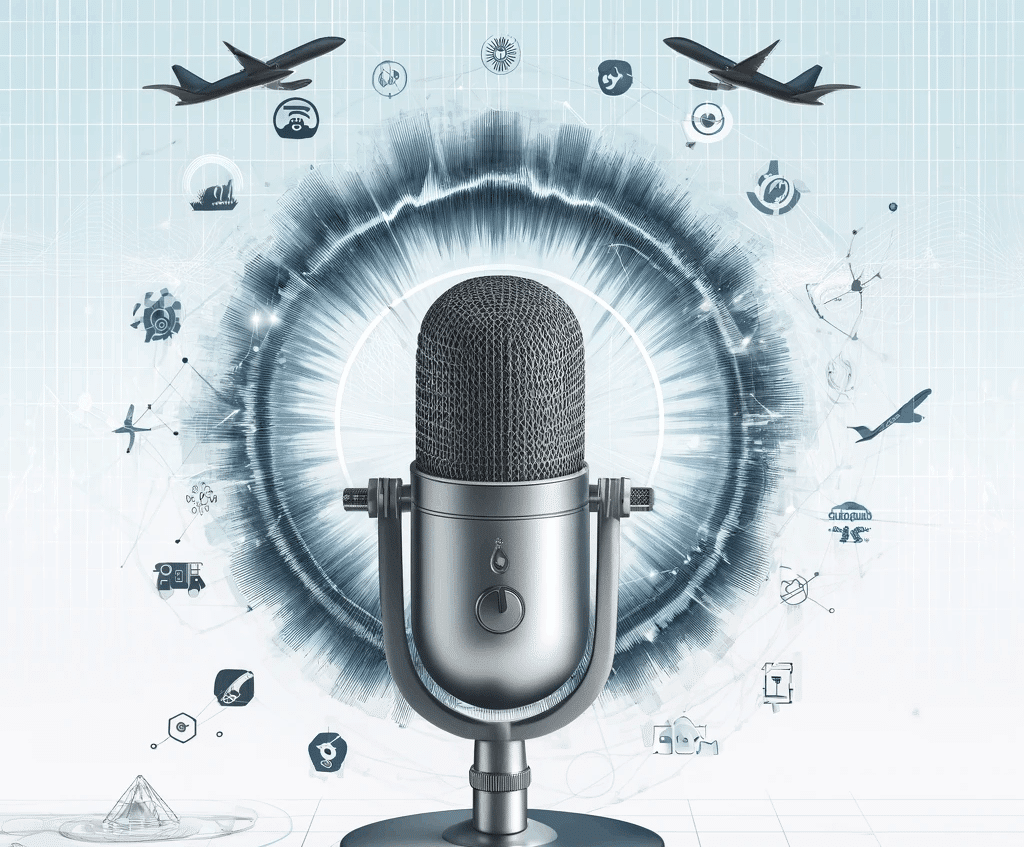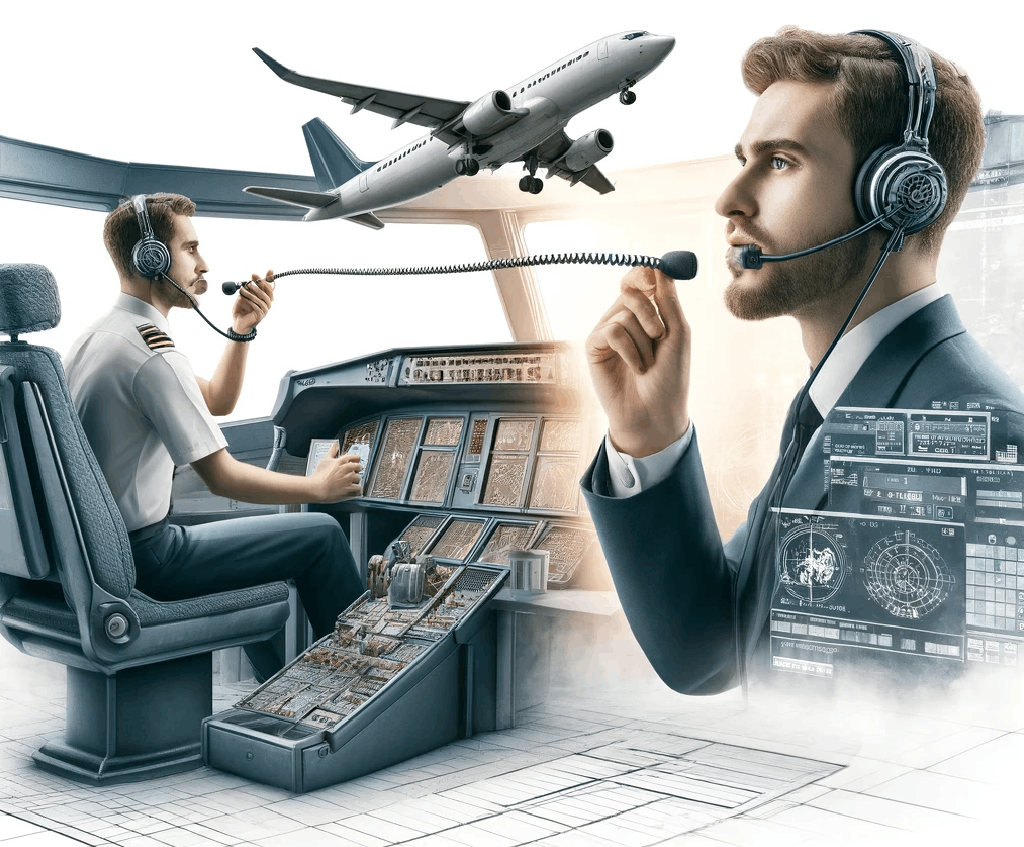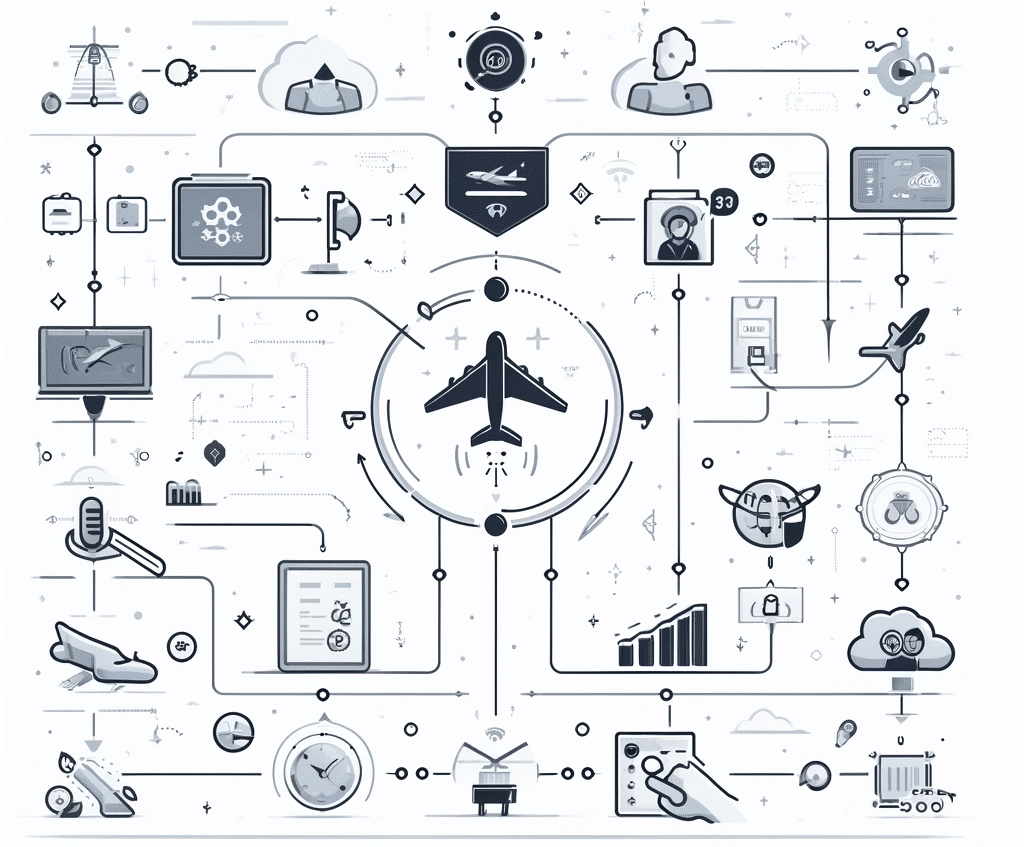Discover how the latest speech to text solution is revolutionizing document handling in aviation logistics.
Speech to text solution for document handling in aviation logistics
Surprisingly, paperwork is the spine of aviation. Even pilots (not to mention dispatching or maintenance officers) spend 75% of their work time doing reports.
Imagine having these things simplified with the help of speech-to-text technology and AI.
In this article, we will explore the main aspects of speech-to-text technology, its role in aviation logistics, the benefits of implementing it, and the challenges and future outlook.
Let’s get started!
Technological Advancements in Aviation: AI and Automation
Understanding Speech to Text Technology
The Basics of Speech Recognition
Speech recognition, also known as automatic speech recognition (ASR) or speech-to-text (STT), is a technology that converts spoken language into written text. It utilizes a combination of acoustic and language models to interpret spoken words and phrases. At its core, speech recognition relies on algorithms that match the patterns and frequencies of spoken words in a given language.

Speech recognition technology has evolved significantly over the years, with advancements in machine learning and artificial intelligence playing a key role in improving accuracy and performance.
This year, the total market of speech-to-text technologies will reach US$7.14bn
. It is predicted that it will grow at an annual rate of 14.24% and reach US$15.87bn by 2030.These systems are trained on vast amounts of speech data to enhance their ability to recognize diverse accents, dialects, and speech patterns.
The growth of speech-to-text technology is strongly tied to the spread of voice assistants and AI. As of today, there are 8 billion voice controlled devicesin use. The popularity of the devices grows with the number of features they have. Amazon’s Alexa only has80,111 features.
So, how do people use voice assistants now?
The applications are numerous. Modern applications powered by speech-to-text technology are far from the traditional Alexa and Siri voice assistants. Modern voice assistants don’t just tell weather and set alarm, they can do meaningful conversations, schedule meetings with clients, do Google search and return findings, or offer food recipes based on your fridge contents.
Yet, the use of speech-to-text application for reporting handling is a relatively new domain, with few to no ready-made solutions on the market.
Let’s discuss how voice-powered document handling can help aviation companies work smarter.
How Speech to Text Works in Document Handling
When it comes to document handling in aviation logistics, speech to text technology can greatly streamline the process.
The solution typically involves deploying speech recognition software on a device, such as a smartphone or a specialized handheld device, that captures the audio input. The captured speech is then processed by the software, which translates it into written text. This text can be further processed by natural language processing tools and further fed to the AI engine that can process the query.
The voice assistants of older generations were different. For example, the effectiveness of the first versions of Siri and Alexa depended greatly on their ability to match the recorded sound to the samples in the database. As a result, words uttered with deviations, mumbling, or accents weren’t caught.
Modern tools, based on NLP (natural language processing) work smarter.
For example, NLP software like ChatGPT is built on the neural network, called “The Transformer.”
Transformers can predict every next word in the sentence, so they get the meaning of the word even if it’s not pronounced correct. This is close to human rationing.
This technology used as “the brain” of the modern speech-to-text applications revolutionizes the way we use voice assistants.
Now, you can use speech to text technology for document handling with increased efficiency and accuracy. You eliminate the need for manual transcription of audio recordings, save time, and reduce the risk of errors in document processing. This can be particularly beneficial in industries where accurate and timely documentation is crucial, such as aviation logistics.
The Role of Speech to Text in Aviation Logistics
Streamlining Communication in Aviation
Timely and accurate information exchange cannot be overestimated. By enabling personnel to dictate their communications, such as instructions, reports, or inspections, speech to text technology can significantly enhance the speed and accuracy of information transfer.

Furthermore, speech-to-text technology can help reduce the cognitive load on operators by allowing them to speak their messages quickly and clearly.
Due to the novelty of the field, the data on the effectiveness of voice assistants in aviation are scarce, but let’s transfer the results achieved in on-the-earth applications and assume they are applicable for in-the-skies domain.
So, 62% of smartphone users in the US use their voice assistants when driving. This helps them do important tasks when their hands are occupied. Also, 68% of voice assistants users agree that these devices make their lives easier. Imagine this level of effectiveness and satisfaction transferred to the aviation niche?
Enhancing Document Management with Speech-to-Text
Aviation logistics involves dealing with a vast number of documents, including manifests, airway bills, customs forms, and maintenance records. Traditional document handling methods can be time-consuming and prone to errors. By leveraging speech-to-text technology and AI, mainly intelligent document processing (IDP), organizations can streamline the creation, modification, and retrieval of documents, making the entire process more efficient and reliable.
Moreover, speech-to-text technology can facilitate better organization and categorization of documents through voice-activated tagging and indexing features. Hiring a Data Scientist with eNest saves time during document retrieval and ensures that important information is easily accessible when needed, improving overall operational efficiency in aviation logistics.
Benefits of Implementing Speech to Text Solutions
Improving Efficiency in Aviation Logistics
Implementing speech to text solutions can lead to significant improvements in operational efficiency. By eliminating the need for manual data entry, personnel can focus on other critical tasks. Moreover, the speed at which speech to text technology can convert spoken words into text can expedite document handling processes, reducing overall turnaround times.

Furthermore, the implementation of speech to text solutions in aviation logistics can enhance communication among team members. Real-time transcription of verbal communications can ensure that all parties involved have access to accurate information promptly. This can streamline decision-making processes and improve collaboration within the logistics chain, ultimately leading to smoother operations.
Reducing Errors in Document Handling
Manual data entry is inherently prone to errors, which can have serious consequences in aviation logistics. By removing the human element from data entry, the risk of transcription errors is minimized. Speech to text technology, a crucial component in this context, can accurately capture spoken words, reducing the likelihood of data discrepancies and improving data integrity. Hiring a software development team to implement and optimize such technology can further enhance its effectiveness.
In addition to reducing errors, speech to text solutions can also provide a valuable resource for data analysis and trend identification in aviation logistics. By converting spoken information into searchable text, organizations can easily extract valuable insights from large volumes of data. This can help identify patterns, optimize processes, and make informed decisions based on comprehensive data analysis.
Challenges in Adopting Speech to Text Solutions
Dealing with Accents and Dialects
Accents and dialects can pose challenges for speech recognition systems, as they introduce variations in pronunciation and speaking patterns. It is a common issue for voice assistant users in multinational environments like the US. According to statistics, 60% of voice assistant users
say that the app’s inability to understand them is their main frustration. At the same time, 45% of them say they’d use voice assistants more if they thought they were “smarter.”
In aviation logistics, where personnel comes from diverse backgrounds, it is crucial for speech to text solutions to “understand” accents and dialects.
As we’ve mentioned before, previous versions of speech-to-tech technology depended greatly on the sound database. If, some dialect variant wasn’t pre-included into the database, the voice assistant failed to catch the meaning.
Modern natural language processing tools, like transformer algorithms (ChatGPT), can predict the meaning of each next word from the context (following the rule: “based on what millions of people said online, what the next word in this sequence should be?”). This minimizes error scenarios and makes speech-to-test really effective.
Overcoming Background Noise in Aviation Environments
Aviation environments can be noisy, with various sources of background noise, such as aircraft engines, machinery, or communication systems. Speech to text technology must be able to effectively filter out such noise to ensure the accuracy of the captured speech. Noise cancellation algorithms and specialized microphones can help mitigate this challenge.
Furthermore, in critical aviation operations where clear communication is essential for safety, background noise can significantly impact the effectiveness of speech to text solutions. For instance, during takeoff and landing procedures, the cockpit can be filled with loud engine noise, making it difficult for traditional microphones to capture clear speech.
Advanced noise reduction techniques, such as beam forming technology that focuses on specific sound sources, are crucial in ensuring that speech to text systems can function accurately in high-noise environments.
Future of Speech to Text in Aviation Logistics
Emerging Trends in Speech Recognition Technology
Speech recognition technology continues to advance, and new trends are shaping its future in aviation logistics. One such trend is the integration of artificial intelligence (AI) and machine learning (ML) algorithms into speech to text systems, enabling them to adapt and improve over time. Additionally, the use of cloud computing allows for more powerful processing capabilities, opening up possibilities for enhanced speech recognition accuracy and performance.
Predictions for Speech to Text in Aviation Logistics
As speech to text technology matures and becomes more widely adopted in the aviation industry, its impact on document handling, and overall operational efficiency is expected to grow significantly. It is anticipated that speech to text solutions will become an integral part of aviation logistics, revolutionizing how information is captured, processed, and shared. By leveraging the power of speech, organizations can overcome traditional limitations and unlock new possibilities in document management within the aviation industry.
In addition to the integration of AI and ML algorithms, another emerging trend in speech recognition technology is the development of specialized vocabularies for aviation logistics. These vocabularies are designed to accurately recognize and transcribe industry-specific terms, abbreviations, and acronyms, further enhancing the accuracy and efficiency of speech to text systems. By understanding the unique language used in aviation logistics, these systems can provide more precise and reliable transcriptions, reducing the need for manual corrections and improving overall productivity.
Furthermore, advancements in speech recognition technology are not limited to the transcription of spoken words. Innovations in natural language processing (NLP) have enabled speech to text systems to analyze and interpret the meaning behind the words, allowing for more sophisticated and context-aware applications. For example, in aviation logistics, speech to text systems can not only transcribe pilot communications but also extract relevant information, such as flight details and instructions, and automatically update corresponding documents and databases.So come on hire a Data Scientist with eNest for automation and integration which has the potential to streamline operations, minimize errors, and enhance safety in the aviation industry.
Summing up
In conclusion, speech to text technology offers a promising solution for document handling in aviation logistics. By converting spoken words into written text, it streamlines communication, enhances document management, improves efficiency, and reduces errors. While challenges such as dealing with accents and background noise exist, advancements in speech recognition technology are steadily addressing these issues. The future of speech to text in aviation logistics is bright, with emerging trends and predictions pointing towards its increasing integration and impact in the industry.
Interested in a proprietary text-to-speech solution to automate tasks in your company?
Contact eNest for a free consultation and advice. You will get a one-on-one call with our specialist, during which you will get answers to all of your questions. Book a call now!
Have a question?
Speak to Data Scientist
 Jagdeep Chawla
Jagdeep ChawlaMS in Data Science
NorthWestern Univeristy, Illinois
MS in Data Science
NorthWestern Univeristy, Illinois




